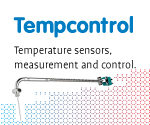2.4.2 Radiative exchange
If no reflections of radiation are taken into account, radiative exchange from one surface to the other can be written as: in which ε is the emissivity of the surface...
If no reflections of radiation are taken into account, radiative exchange from one surface to the other can be written as:

in which ε is the emissivity of the surface and Fij is the view factor (or ‘configuration factor’ of one surface to the other.
However if more than one surface in this equation is non-black (ε< 1, also called ‘grey’) than some of the radiation coming from surface i will be reflected by surface j. A part of this reflected energy ends up on other surfaces, which in their turn can reflect the radiation. These reflection are not taken into account in the formula above and therefore it is not accurate for gray surfaces
Generally radiative exchange for gray bodies is calculated using two different methods:
- Gebhart method (ref. 1,2)
- Net-radiation method (ref. 3,4,5,6,7), a.k.a. the Oppenheim method
Both methods result in the same net radiative balance of the surfaces involves, but the methods and definitions are quite different. In practice the Gebhart method is considered to be the method with the least chance of error and the most direct method to calculate radiative energy transfer between surfaces. The net-radiation method is the one most described in literature, and has because of its resistance analogue many practical advantages in radiative exchange calculations, but the formulas of the method are often erroneously used.
Both methods will be explained in more detail in the following sections.
